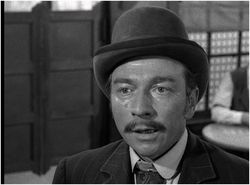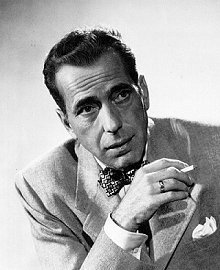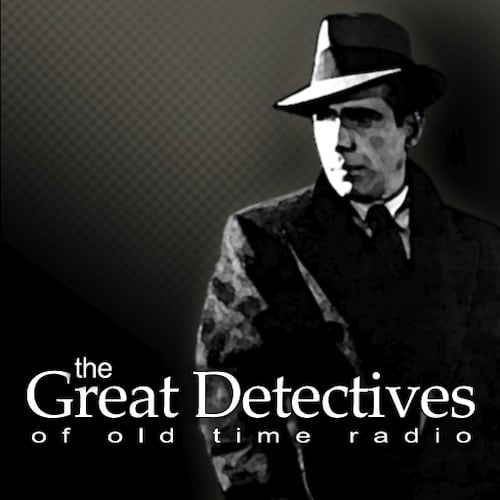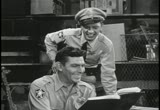As I listen to radio in a wide variety of forms, I’ve noted that some people are essential. If they had not been involved, the Golden Age of radio would not have been the same. To me the 100 people on this list best defined this virtue.
Some of these are lead actors, others are character actors-men and women who played (in some cases) Thousands of Roles with poise and professionalism, and others were hardly heard at all as their work was behind the scenes. Yet, they were all part of making the golden age of radio sparkle. They each brought something unique and wonderful to the table that made the golden age unforgettably.
Of course, any time you make a list like this, names get left off and in a few years, I may see some others who may be promoted to a higher spot, but based on what I’ve learned of radio over the last few years, this is a solid list. I hope you enjoy this series as we work our way to the top.
100) Vic Perrin Vic Perrin’s first radio appearance was in 1943 for Free World Theater. He’d quickly become one of radio’s most vital character actors. He was a regular stock player for Jack Webb who was used constantly. He also appeared on programs such as Family Theater and Suspense. He continued to make radio appearances as the Golden Age headed to the twilight of its existence appearing regularly on Gunsmoke, Yours Truly Johnny Dollar, and Have Gun Will Travel. He also took on a rare recurring role as Sgt. Goerss on Fort Laramie. He also played a key role in Radio Revival attempts in the 1970s appearing on Rod Serling’s Zero Hour and the Sears Radio Theater. His voice work was also prominent in cartoons. He served a whole new generation of fans with his performance as Sinesto in the Super Friends, along with voicework for the 1978 Fantastic Four and 1983 Incredible Hulk animated programs
Vic Perrin’s first radio appearance was in 1943 for Free World Theater. He’d quickly become one of radio’s most vital character actors. He was a regular stock player for Jack Webb who was used constantly. He also appeared on programs such as Family Theater and Suspense. He continued to make radio appearances as the Golden Age headed to the twilight of its existence appearing regularly on Gunsmoke, Yours Truly Johnny Dollar, and Have Gun Will Travel. He also took on a rare recurring role as Sgt. Goerss on Fort Laramie. He also played a key role in Radio Revival attempts in the 1970s appearing on Rod Serling’s Zero Hour and the Sears Radio Theater. His voice work was also prominent in cartoons. He served a whole new generation of fans with his performance as Sinesto in the Super Friends, along with voicework for the 1978 Fantastic Four and 1983 Incredible Hulk animated programs
99) Jock McGregor
One of radio’s great behind the scenes men: Macgregor’s writing, producing, and directing were behind some of radio’s most significant programs from the early 1940s to the mid-1950s including Murder Clinic, Nick Carter, The Sealed Book, X Minus One, and most famously Mysterious Traveler.
98) Humphrey Bogart Bogart was first and foremost, a movie star.and one of the greatest of his or any other time. However, he showed time and time again that he was able to perform with the best of them on radio when his busy film schedule allowed. He adapted several of his movies to radio including The Maltese Falcon, Casablanca, The Treasure of the Sierra Madre, The African Queen, and To Have or Have Not as well as many of his Gangster roles such as Petrified Forest and Bullets or Ballots. These radio films are a rare treat for fans. Beyond these appearances, Bogart also starred in Bold Venture. Bold Venture was far from the best written radio drama with the oft-recurring plot of Bogart’s character Slade Shannon being played for a royal sucker by the underworld guest star of the week. That the show is so well-loved sixty years later is a testament to the sheer power of Bogart and Becall to overcome all odds, including those imposed by the writers.
Bogart was first and foremost, a movie star.and one of the greatest of his or any other time. However, he showed time and time again that he was able to perform with the best of them on radio when his busy film schedule allowed. He adapted several of his movies to radio including The Maltese Falcon, Casablanca, The Treasure of the Sierra Madre, The African Queen, and To Have or Have Not as well as many of his Gangster roles such as Petrified Forest and Bullets or Ballots. These radio films are a rare treat for fans. Beyond these appearances, Bogart also starred in Bold Venture. Bold Venture was far from the best written radio drama with the oft-recurring plot of Bogart’s character Slade Shannon being played for a royal sucker by the underworld guest star of the week. That the show is so well-loved sixty years later is a testament to the sheer power of Bogart and Becall to overcome all odds, including those imposed by the writers.
97) Dennis Day
Dennis Day made his first appearance on Jack Benny’s show in 1939 with the character of a naive young tenor. A character he played throughout an association with Benny that would extend for more than 30 years. In addition to his association with Benny, the charismatic Irish singer had his own comedy show, A Day in the Life of Dennis Day.
96) Barton Yarborough
Barton Yarborough had several key recurring roles he was remembered for: Clifford Barbour on Carlton Morse’s long-running soap opera. One Man’s Family, Doc Long in I Love a Mystery, and Joe Friday’s first partner Ben Romero in Dragnet. Yarborough was the only person other than Jack Webb to narrate on Dragnet in the episode, The Big Ben which features Joe Friday being shot. At that point, Ben Romero takes over the narration. In addition to these feature recurring roles, Yarborough played countless character roles on radio. Most frequently he used his Texas twang to create a wide variety of characters who ranged from the amusing to the sinister. Yarborough offered his services to equally wide variety shows ensuring his place as one of radio’s most essential performers. Yarborough died all too soon at the age of 51 after filming the first two television episodes of Dragnet.
Next week: #91-#95
If you enjoyed this post, you can have new posts about Detective stories and the golden age of radio and television delivered automatically to your Kindle.

